Convenience Stores, Grocery Stores and Supermarkets in Japan
You can about Japan by shopping for food along side the local people
You are visiting Japan to learn something new — including new foods. Without a doubt you can eat in wonderful restaurants your entire time in Japan. But, you can also mingle with the Japanese people and venture into convenience stores, grocery stores and supermarkets. Japan has all of these in abundant quantities.
Convenience stores are where you might expect them, located conveniently within walking distance of wherever you are staying. Grocery stores are neighborhood markets with all types of produce, packaged foods, dairy products, snacks, candies and beverages. While you often see larger supermarkets as standalone structures outside, you can also find these occupying a complete floor — often the basement — of department stores.
While convenience stores sack your groceries for you, expect to do this yourself in most grocery stores and supermarkets. If you are staying in Japan for some length of time, purchase some cloth grocery bags to use and re-use when you shop.
Many foods in Japan are similar to what you know, while others are very different. You can learn a lot about people by eating what they eat and shopping where they shop. Enjoy Japan.
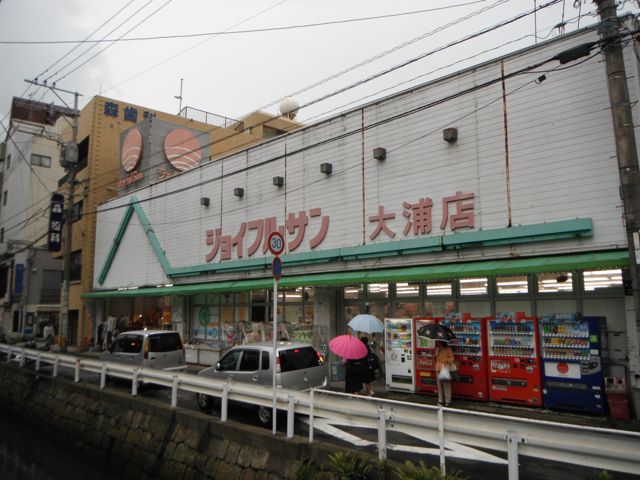
Joyful Sun is a local supermarket in Nagasaki near the foot of Hollander Slope at the end of the green line tram. Village Hiker found the store to be well organized with very low prices. For example, 2-litres of prepared green tea cost 148 yen or 50 yen less then the next best price. This was during the summer of 2012.
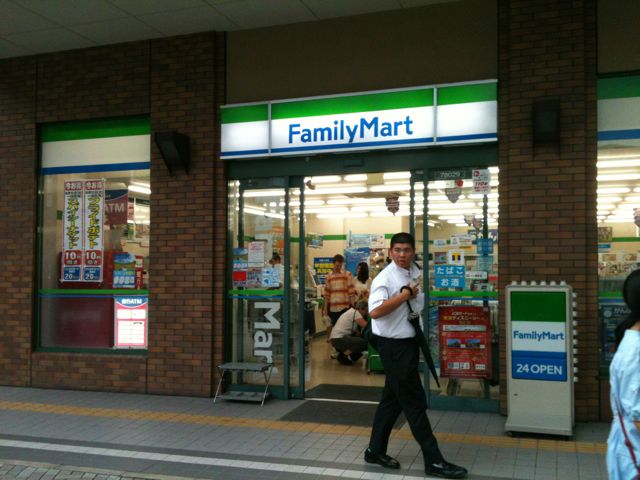
Japanese convenience stores are similar to those you find elsewhere. Many are open 24-hours. They sell food, junk food, soap, soft drinks and beer, plus a lot of other items. This is a FamilyMart convenience store. You find FamilyMart in all large cities. In Japan, convenience store prices are similar to those you find in full grocery stores.
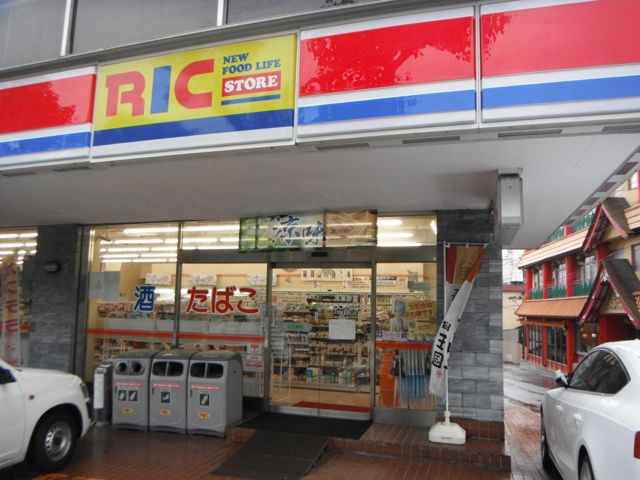
While you do not see a lot of RIC Stores, when you do find one they have excellent sandwiches at prices similar to those you find in full grocery stores. This store is located across from the Nagasaki National Peace Memorial Hall for the Atomic Bomb Victims.
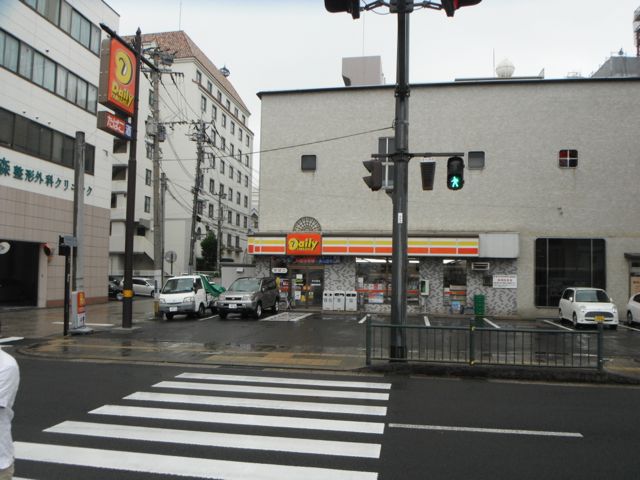
An outlet for Yamazaki Baking Company, Daily Yamazaki is a convenience store chain located throughout Japan. Yamazaki Baking makes both Japanese style and western style goods. The company has been baking and selling since 1948. For a real breakfast treat or mid-afternoon pick-you-up, try the red bean pastries.
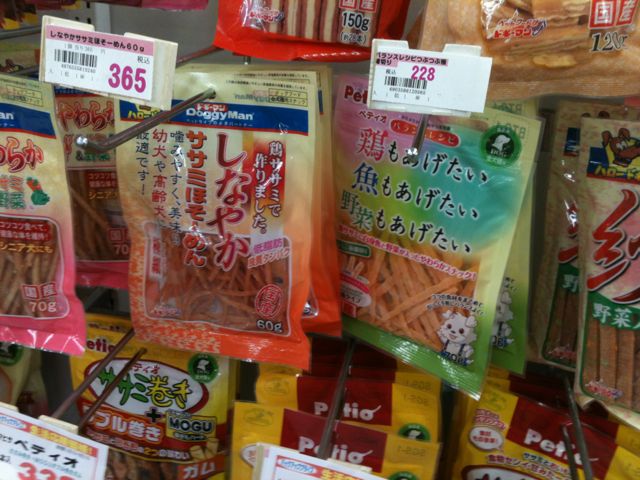
If you don't know the Japanese language, at least obtain an good translation dictionary. Here is why. If the snack you find in Japan looks like spicy dried noodles, it may be. It may be really yummy spiced noodles, crunchy with shrimp flavoring. But it may also be a treat for your dog. So look closely before digging in. Woof!
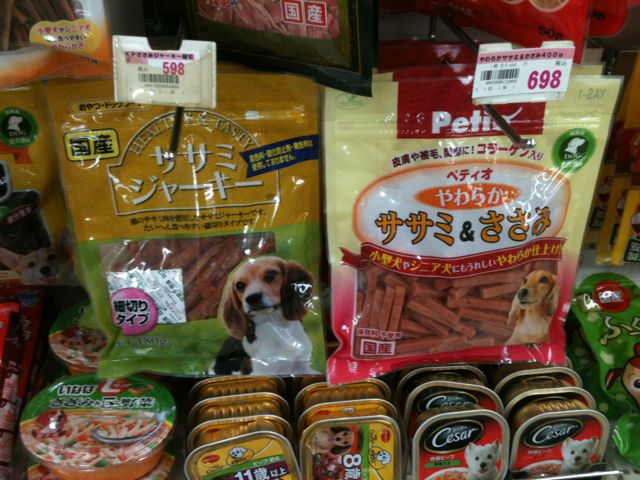
Some pet snacks are more obviously for your dog, from a visitor point of view. See the previous and next photos.
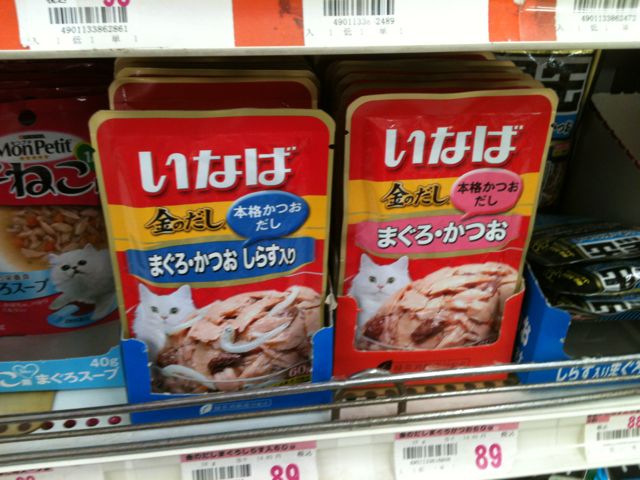
In fairness to cat fans, Japanese grocery stores and super markets also carry cat food. You see a lot of feral cats in Japan, but no dogs running loose. The cats are friendly, walk up to you and purr against your legs. Give a cat a rub between its eyes if you want it to follow you home. How many cats outside of Japan follow you home?
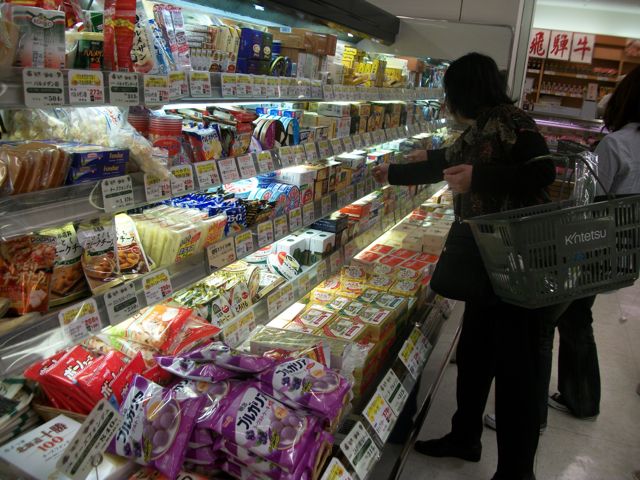
Many Japanese grocery stores have complete cheese aisles, as shown in this photo. So what is the big deal, you ask? Well, a friend of Village Hiker who lived in China for multiple years said she could purchase cheese only from a pizza baker in her city. In her case the pizza business made an exception. Anyway, while in Japan some of the flavors are different from what you may know outside of Japan, the basic cheese products are very similar to those found worldwide. You can find both cheese and cheese food.
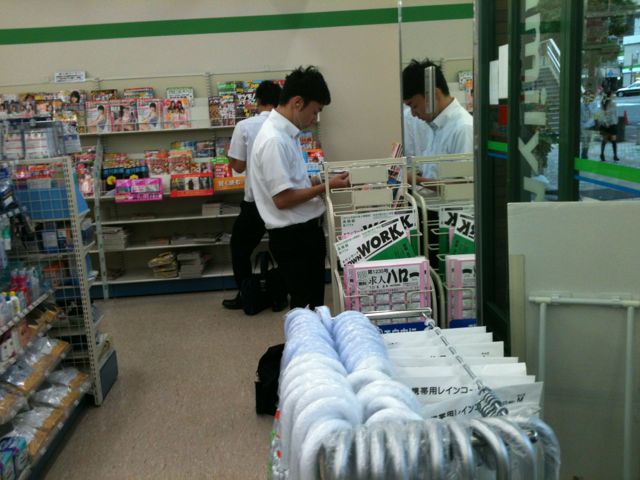
Convenience stores and grocery store sell magazines. Men sometimes stop by to read magazines on their way to work or when going home. In this photo, both men are reading magazines on their way home from work. The time is 18:00 Japan Standard Time. Intelligent as always, Japan has forsaken day light saving time.
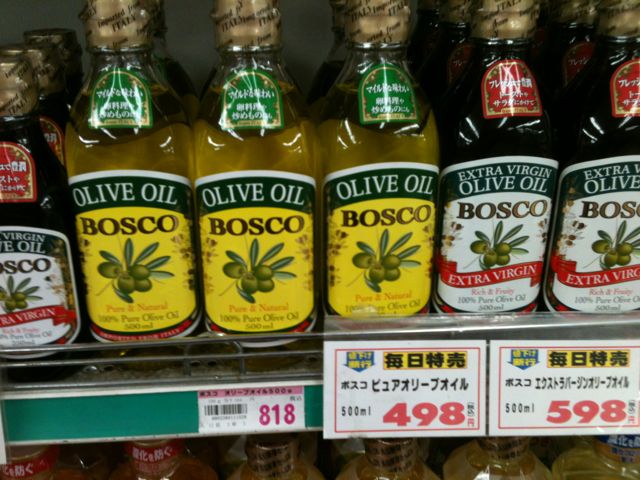
When wanting to cook healthy for yourself, you can find olive oil in Japanese grocery stores. Half a liter costs 498 to 598 yen. Some hostels and ryokans provide cooking facilities, so this is nice to know.
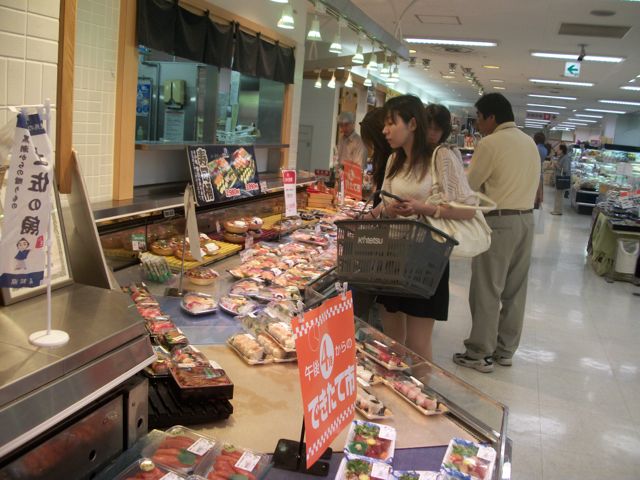
Meat is somewhat expensive in Japan, but still very popular in moderate amounts. These shoppers are looking over selections in the meat section of a supermarket located in a department store basement in Wakayama Japan. Wakayama is a quiet city located on the Kii peninsula on the east edge of the Inland Sea. While the Wakaura Bay of Wakayama is one of the most beautiful seasides in Japan, Wakayama remains largely undiscovered outside of Japan.
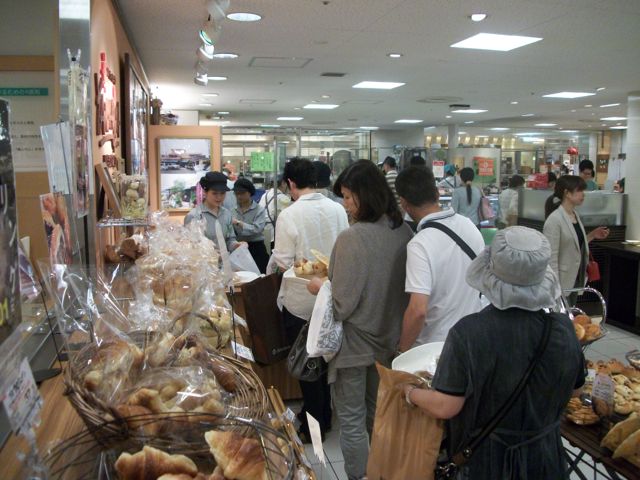
Customers quietly wait in line to purchase a very popular red bean pastry at a food specialty shop located in a Japanese department store. The queue emits quiet conversations and muted laughter. Many department stores offer complete grocery stores plus independent vendors with specialty products.
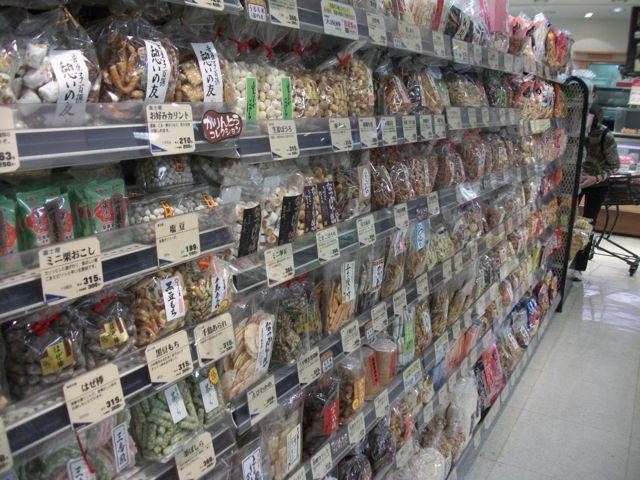
The snacks aisle of a Japanese grocery store offers spicy, salty and sweet treats tailored to Japanese tastes. Others can easily adapt to the new flavors. This photo was taken in a 100-yen discount store with a full grocery department in the basement. Snacks are available at grocery stores, convenience stores and supermarkets.
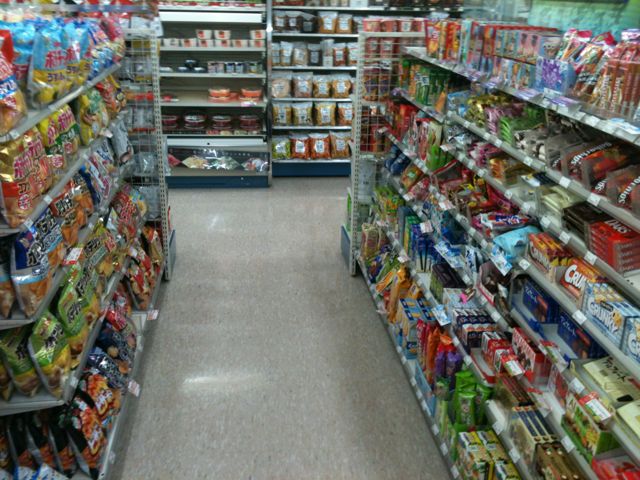
Every supermarket, convenience store and small grocery store carries chips and candy. While some carry potato chips and cheese snacks, you also find spicy, crunchy goodies made with shrimp, taro and seaweed. Instead of turning up your nose, give them a try. The unfamiliar tastes quickly grow on you. If you are salt-sensitive, make sure you read the nutrition labels. Sometimes the amount is listed in grams, instead of milligrams, so read carefully. If you like chocolate, try Japanese dark. It is available from several different producers. You can also find chocolate coated nuts of various types. These are fairly nutritious unless you eat an entire box, which sometimes happens.
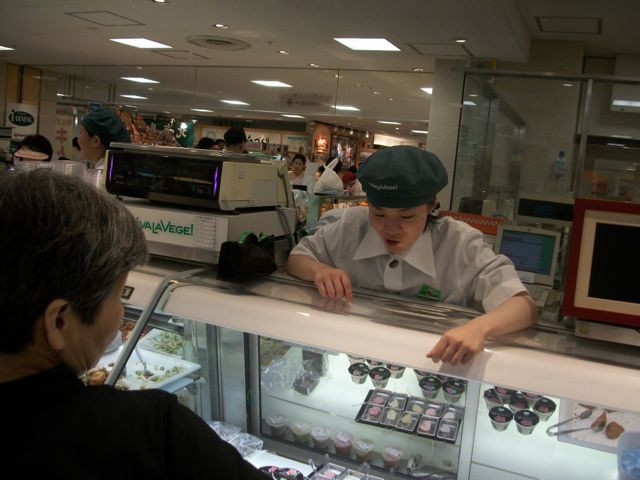
A food service worker helps a customer make a selection at a Japanese department store. Many department stores in Japan include complete grocery stores plus independent specialized shops.
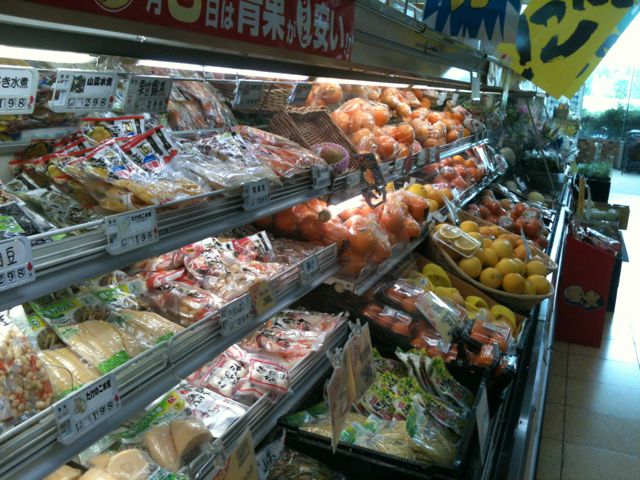
This aisle in a standalone supermarket offers fresh lemons, oranges and other snack-sized fruit, plus various packaged vegetable and fruit products, all priced to encourage healthy eating. Supermarkets also sell apples and bananas, the latter having fresh and day-old pricing. Japanese cities such as Hiroshima, Osaka, Tokyo, Nagasaki and Wakayama have standalone supermarkets, plus full groceries located in the basements of department stores. You can feel comfortable shopping at these stores by just doing it. Carry a Japanese translation dictionary as a printed book or use the free Kobota application on your iPhone or iPod touch to help communicate with store personnel.
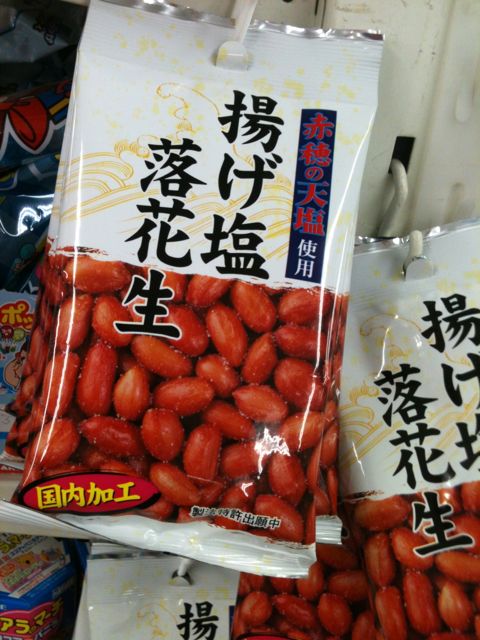
You can buy peanut snacks in Japan. These are spicy and cost 105 yen for a snack-sized package. These are 2012 prices. Other popular nuts include almond and macadamia, chocolate covered in Japanese dark cocoa.
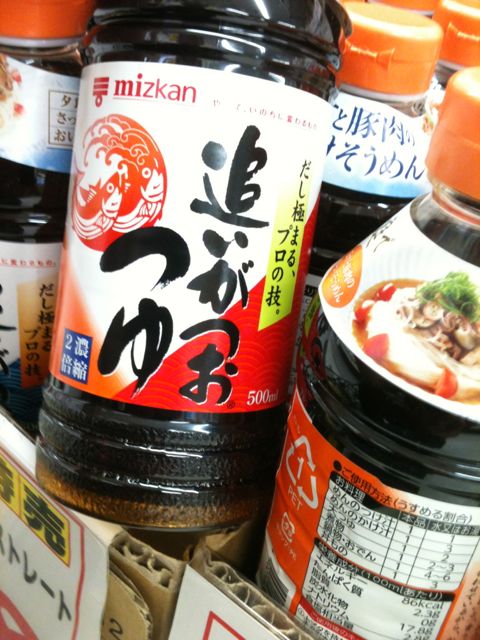
With omega 3 the craze in cholesterol-rich America, remember Asia has been cooking with fish products for centuries. This includes Japan. The bottle here is a fish sauce. You may need to be careful with this if you have issues with sodium. Ready the label on the back. You are looking for the amount of ナトリウム.
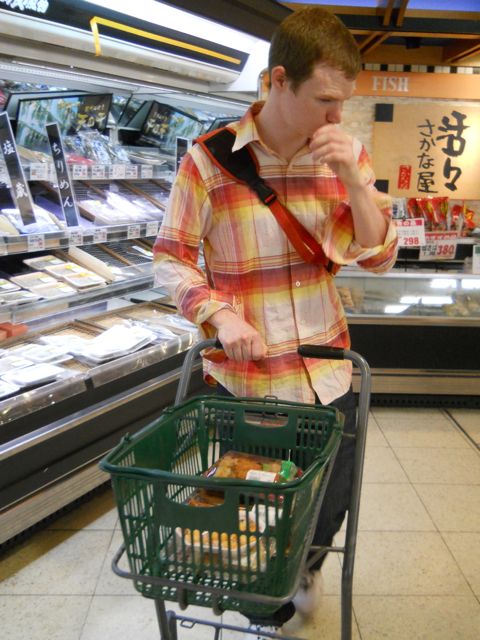
When you grocery shop in Japan you can pick up a hand basket and carry it through the store or place it in a rolling cart as shown in this photo. Convenience stores have only the hand basket without the carts. The highly maneuverable carts roll smoothly and lightly. When you check out, you set the hand basket on the counter for easy access by the checkout operator.
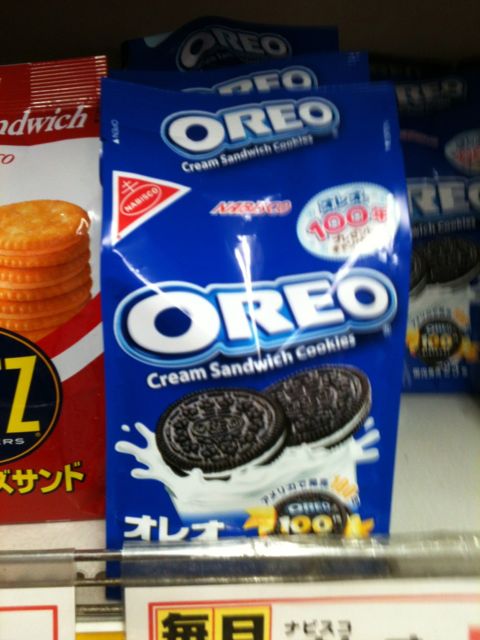
In Japan for a long time and need a familiar flavor? Try Oreos, as international as a friendly smile.